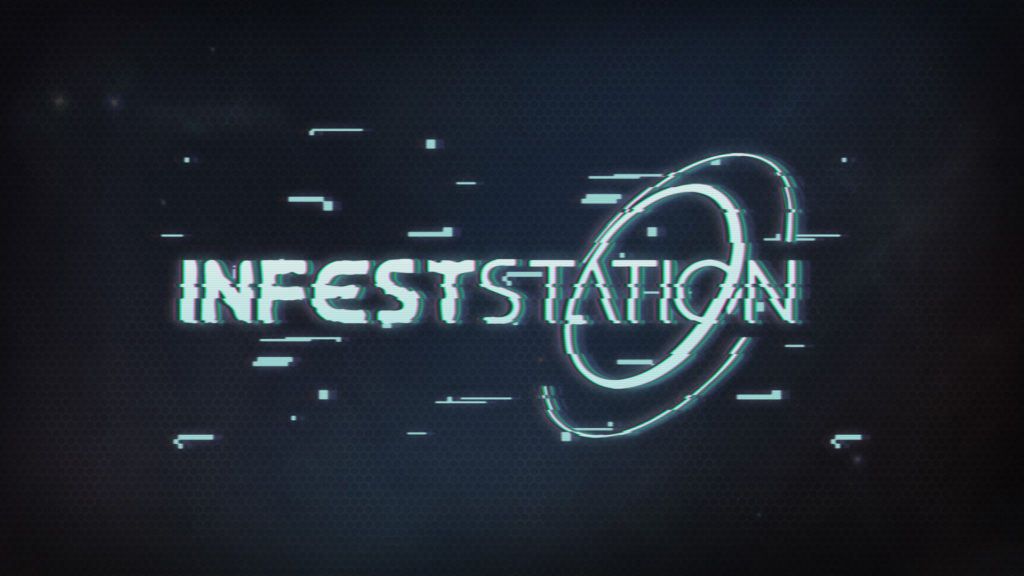A Public Promise
Four weeks into development, it seems to finally be time for our first official Dev Blog post! I’ve mentioned elsewhere that we aim to do things a bit differently with INFESTSTATION by putting an emphasis of transparency and community inclusion throughout the dev process – no “it’s done when it’s done” or “why? Because making games is hard!” brush offs and no hiding in the dark until the final days leading up to release.
Instead, we will be using this space to talk about our goals, share our wins (and our losses) as content progresses, and try to give as much insight into the general process as we can while we’re making the game. Some will say that we’re crazy – that you can’t make unfinished content public! What if we show something that doesn’t end up making it into the game? What if we show something and it changes? What if we have to make a hard pivot or walk back an idea that doesn’t work? What if the schedule changes or a milestone gets pushed back?
Well, so what if that happens? Sure, “making games is hard” and it does “take time”. Some things will go well, somethings will come crashing down like a lead balloon. But that’s just game development! So we’re going to toss aside our fears and pull back the curtain. A million years ago, when I ran the Kickstarter for our “life before independent game dev” pen and paper RPG campaign app – InfinitasDM – I learned a very valuable lesson about public inclusion during development — that it’s AWESOME.
Lets Talk Roadmapping
So after a set up like that, where do we go next? I’d like to start by putting my money where my mouth is, so lets get the biggest elephant out and under the spotlight. The great big timeline in the sky known as the Timeline segment of the Development Roadmap.

As you can see here, we’ve got a long road ahead of us. We are planning on a 2 year development cycle and are currently just sliding out of the earliest part of Pre-Production – Planning and Setup, and into Early Prototyping.
Pre-Production: Early Prototyping
So what exactly does it mean for us to be entering “early prototyping” ? For us, that means that we’ve wrapped up the preliminary discussions on what the game will be about, spent time doing exploration of look-and-feel with the team, and in general are now ready to take to Unreal to start feeling things out in a living, interactable environment.
Sure, there’s still lots left to iron out from a design perspective, but in the eternal “chicken vs the egg” scenario that is game development, we’re now at the point where we need to get content roughed out in-engine to engage in the critical loop of “design informing implementation, informing design, informing implementation.” AKA – what sounds good on paper doesn’t always feel good in action and what feels good in action can often drive new directions that need to be explored back on paper.
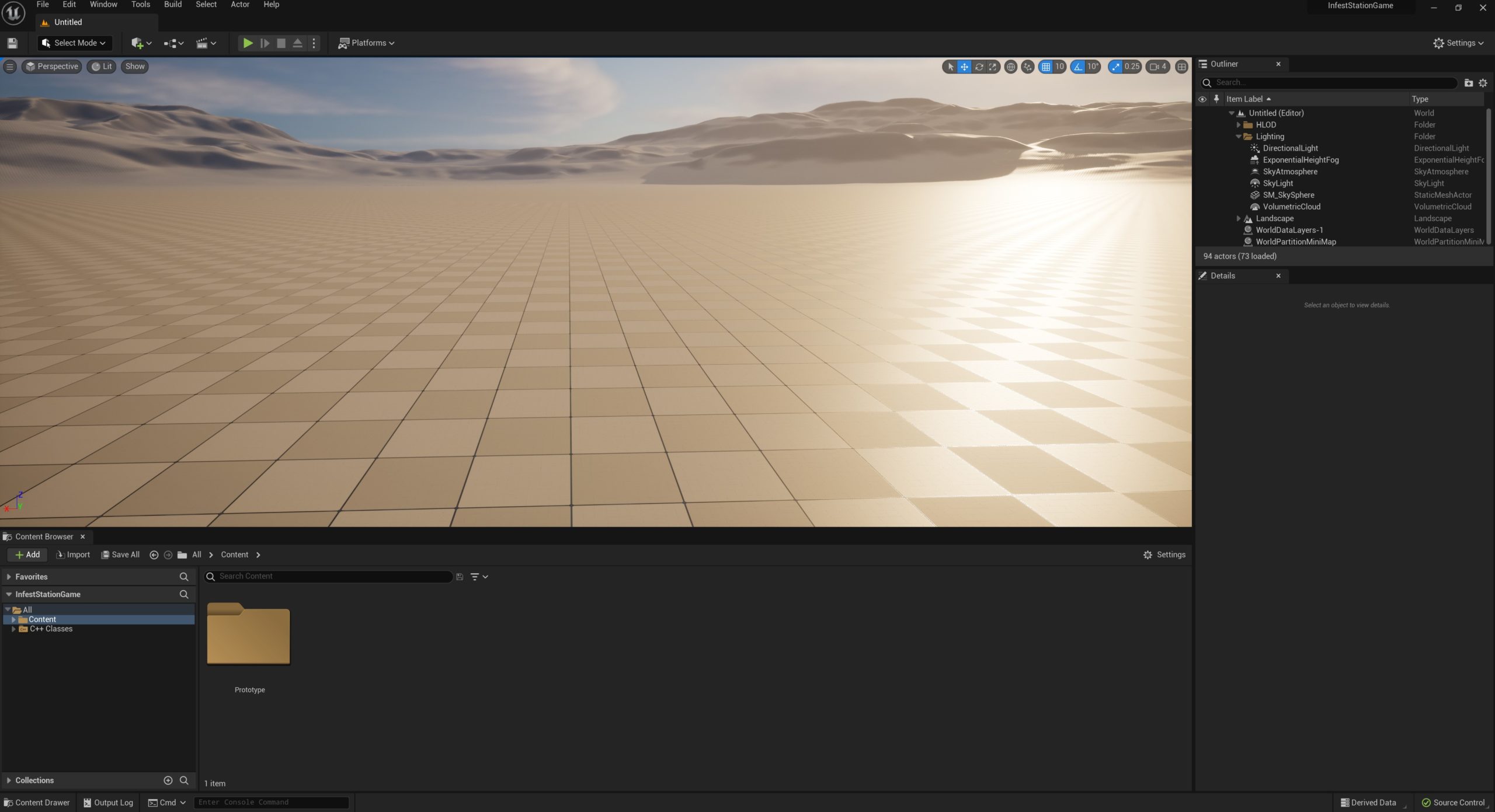
If you’ve been following along with our announcements extra closely, you may be wondering “a blank canvas? What about those screenshots I saw that looked like you already made stuff??” And you’re right – we have done a bit more than a blank unreal project might imply. Part of the previous process included some technical testing in Unreal, primarily to feel out the state of Unreal Engine 5 and how well the newest morsels of tech (like the lighting system Lumen, or the mesh system Nanite) would work in a setting that vaguely resembles the project’s direction.
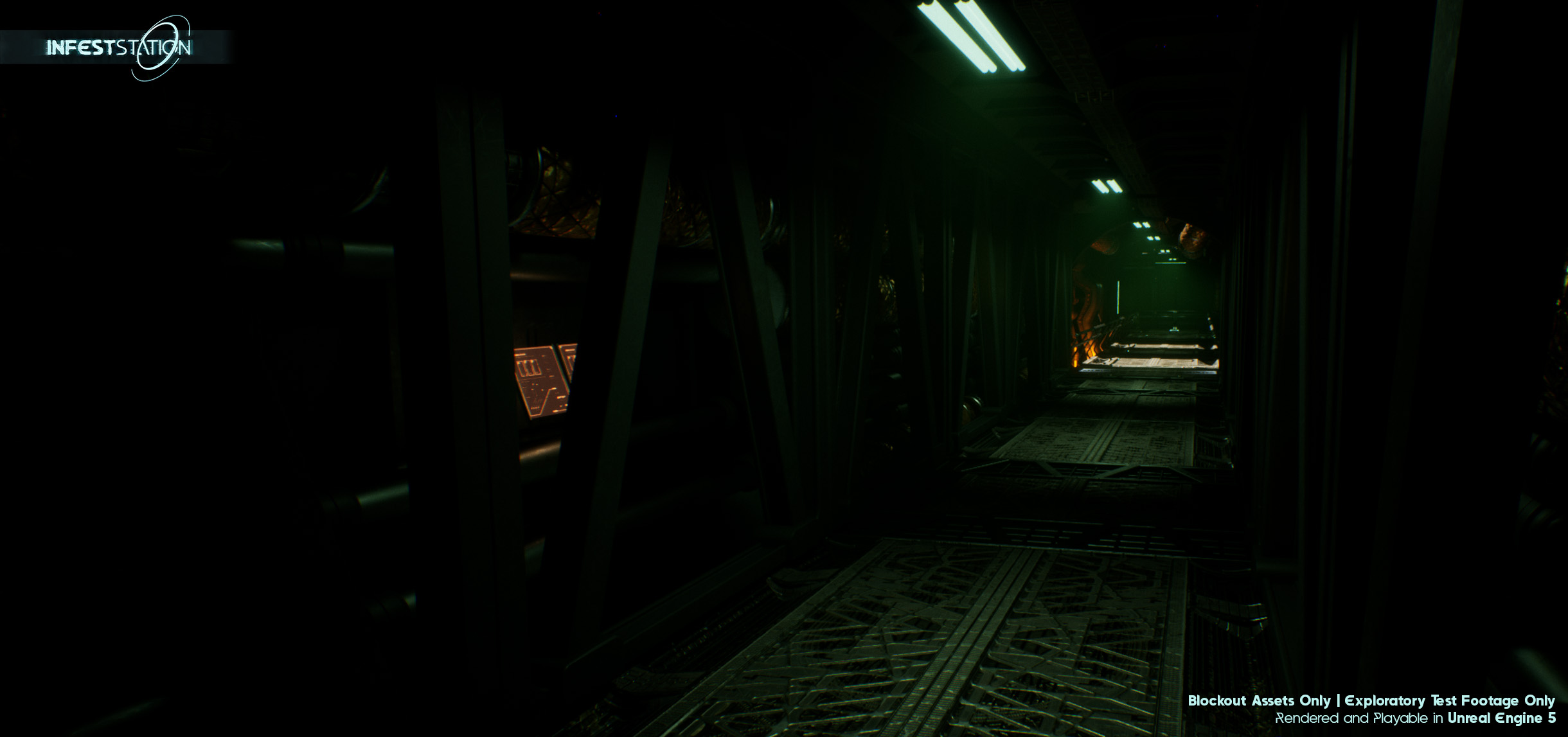
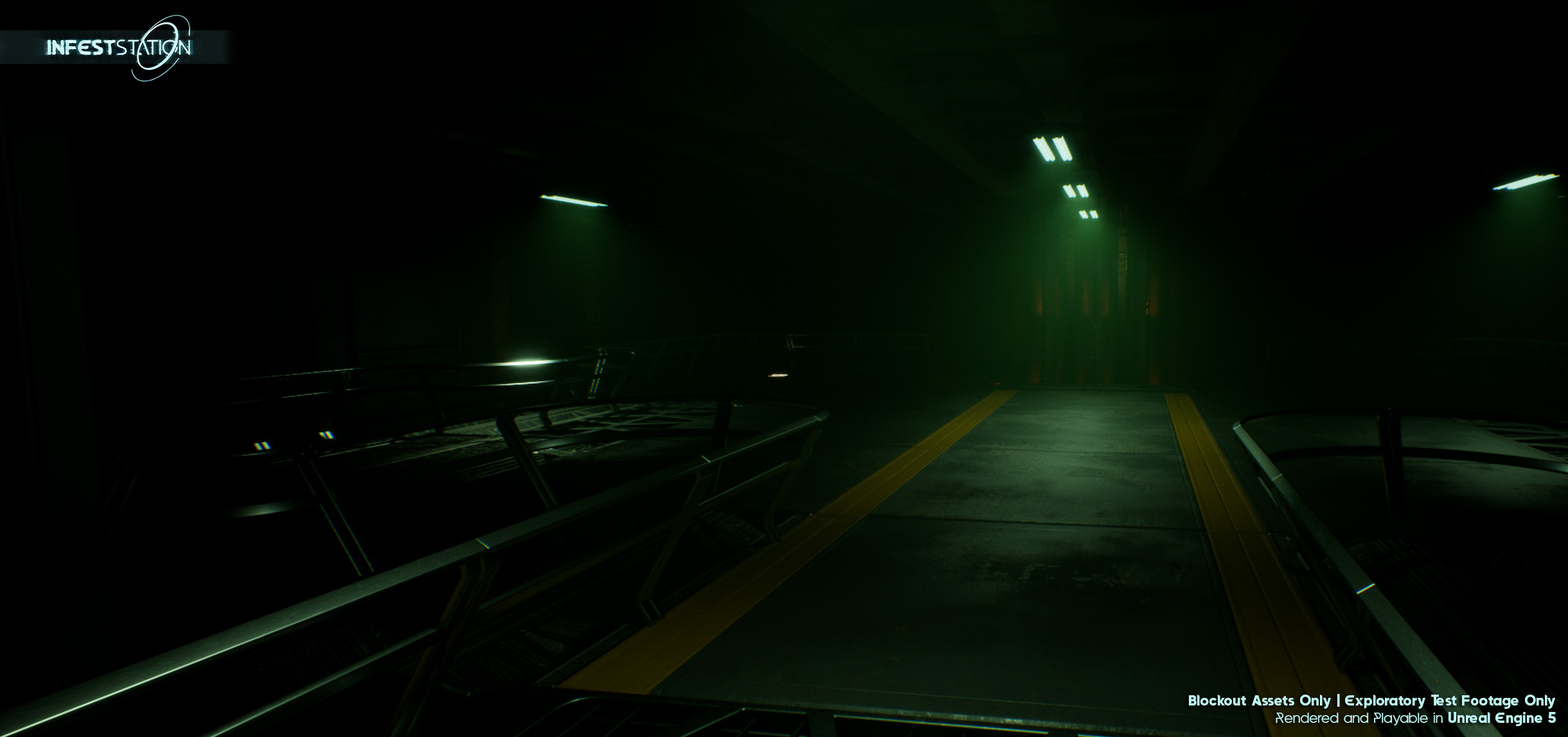
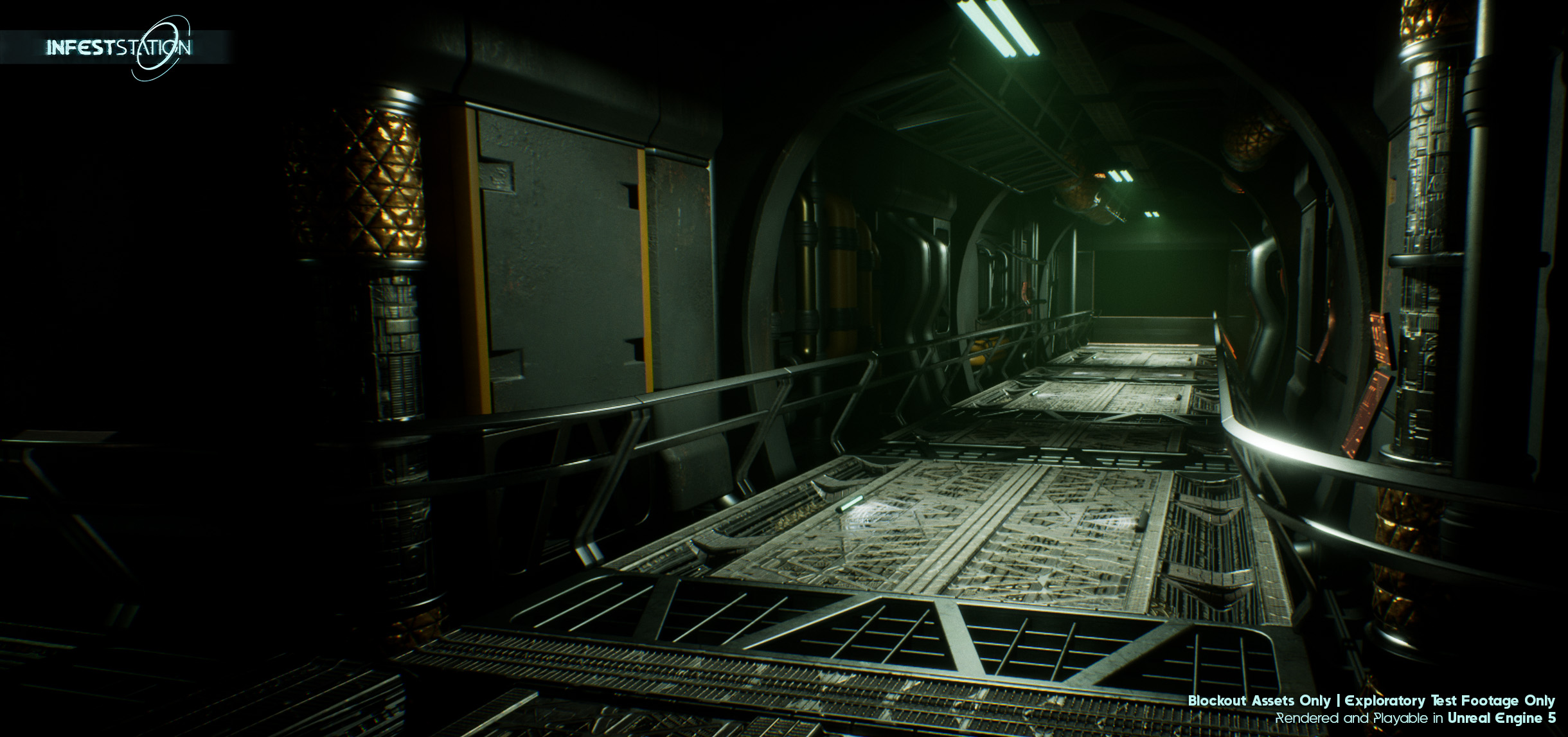
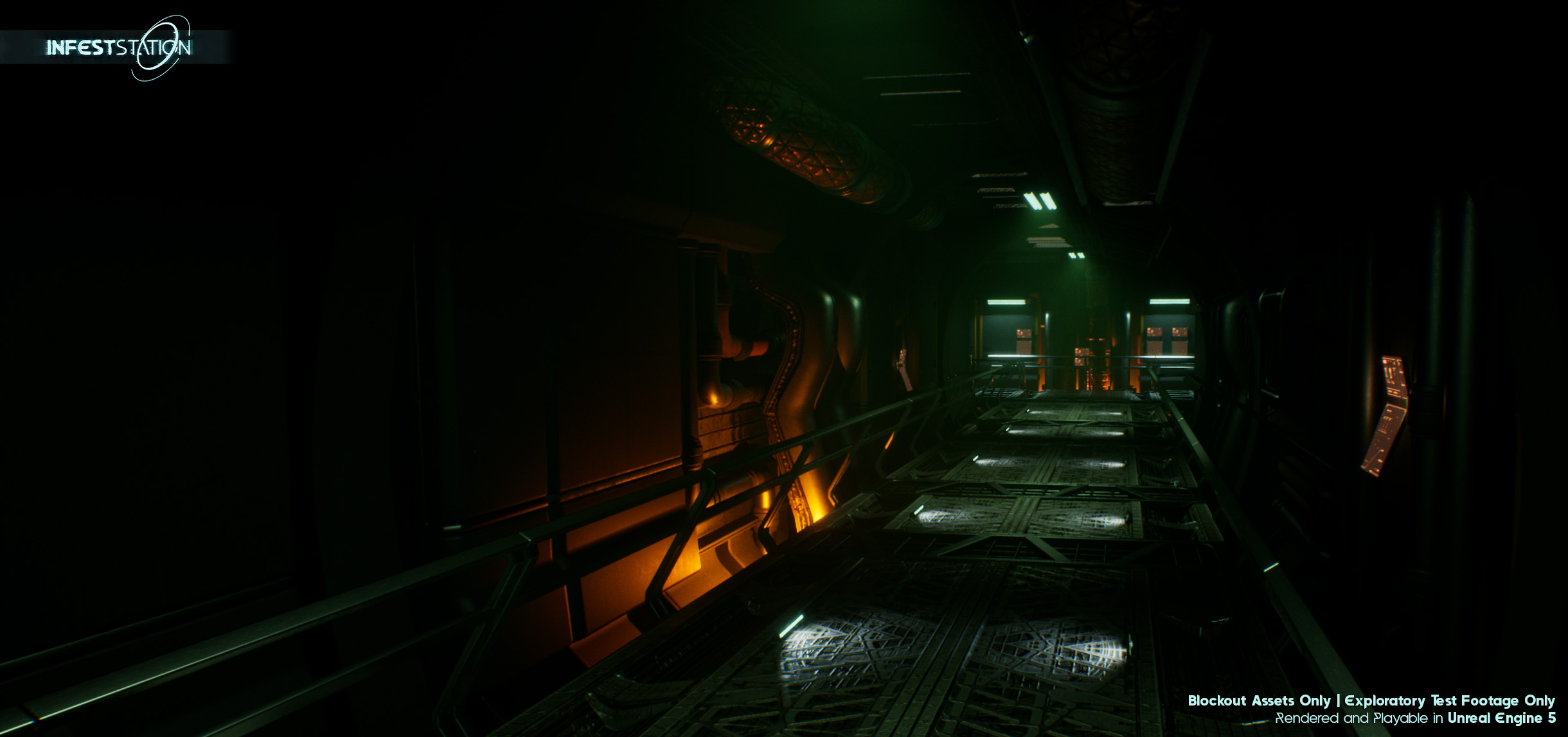
“Yes officer, those are the screenshots in question.”
Things like these were done to ensure that the newest aspects of Unreal Engine 5 can in fact work for the game we wanted to make, so in addition to happening before we even entered Pre-Production, they’re mainly used to test out a “game-ish” environment and are not representative of the final look and feel of the game, the quality of in-game assets, or anything else of that nature. So ultimately, only a few fragments of them will end up getting added to the mainline project branch for any kind of use – even as prototyping tools. But hey, who doesn’t love to look at a few pictures? So here they are. The look-dev before the look-dev!
Not pictured are also several test levels for player movement, item engagement, and other quick load-bearing tests that let us get acquainted with all the latest wheelings and dealings of the engine as it has changed from Unreal Engine 4.x.
So what’s next?
I’m going to try and wrap this up before this becomes a 5-part novel. The next steps for us are some of my favorite moments in game development. The possibilities are allowed to be endless, the meetings are wild and speculative, and the experimentation and fast-moving iteration feels more like a game jam party than a job.
From here on out, I’m going to be posting semi-regular updates on where we’re at, what we’re working on, and how it’s all going. Hopefully, the long and short of it is that it’ll be a fun window into the world of game development that I look forward to sharing with you all!
